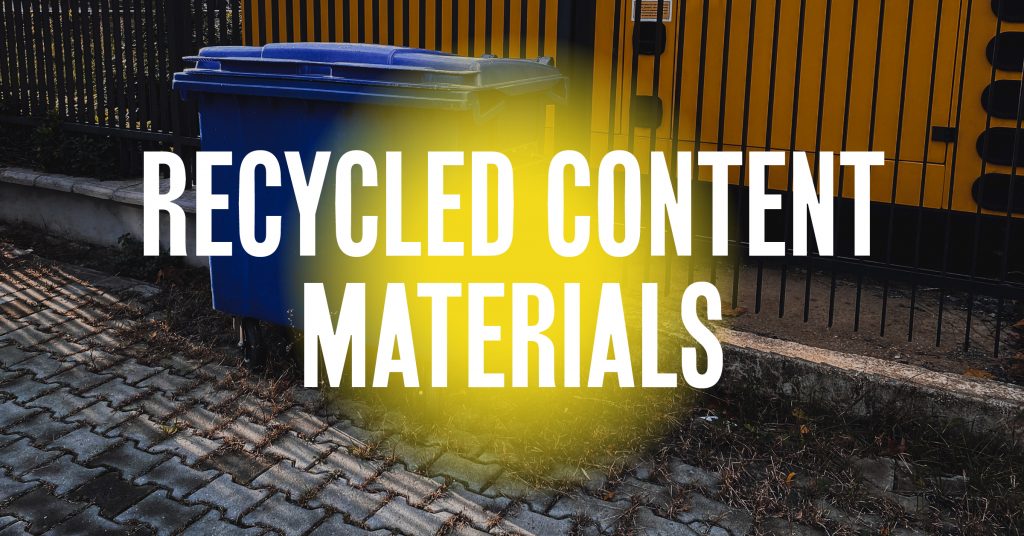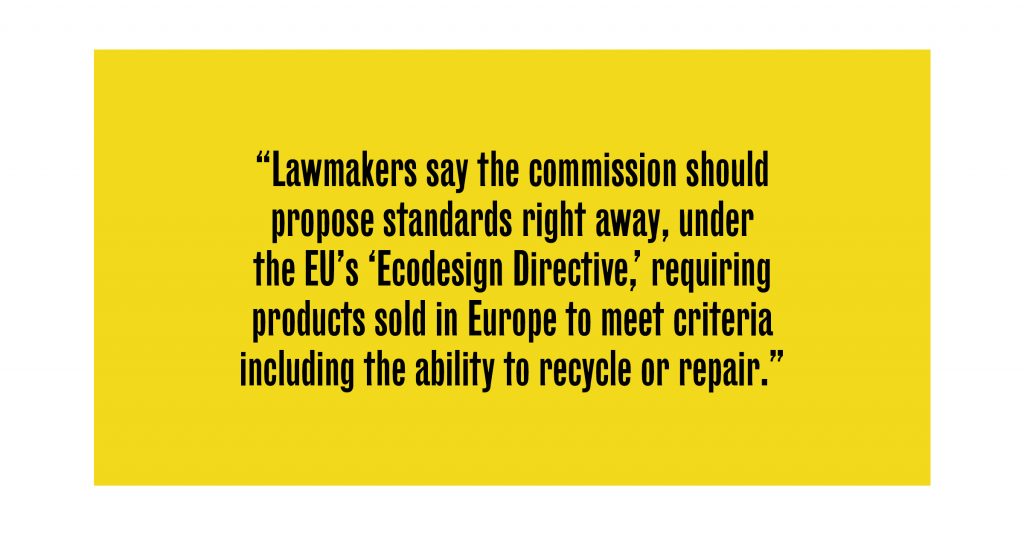
Binding targets to tackle overconsumption and waste will most likely be brought into law in the EU. This is a significant breakthrough and impacts 447m people and all other developed economies.
The European Parliament has called for the EU to introduce binding targets to use recycled content in products and consume fewer raw materials. It also seeks to curb the pile-up of plastic pollution and stop reusable materials from being wasted.
The European Union’s executive commission is drafting laws to rein in the environmental impact of the EU’s 447 million citizens, by using fewer resources and switching from raw materials to more reused and recycled materials.
The UK has introduced a plastics packaging tax of £200 per ton from the 1st April 2022 on all plastics that don’t contain a minimum of 30% recycled content. We can be certain this tax will impact the cost of goods for consumers, it will take longer to realise a positive impact on the material value chain, it’s an aggressive tax which I am sure will be refined through implementation, not least because manufacturers are not able to use recycled content materials (unless chemically recycled) in direct contact with food. The policy is a clear binding target mandated in law, delivered through EPR (extended producer responsibility) framework with direct reporting to HMRC.
Today recycled materials make up only around 12% of the that used by EU industry. The EU incinerates more plastic waste than it recycles. The commission is likely to propose mandatory EU requirements to use recycled content in certain products and sectors, plus binding targets to use less primary raw materials.

Lawmakers say the commission should propose standards right away, under the EU’s ‘Ecodesign Directive,’ requiring products sold in Europe to meet criteria including the ability to recycle or repair.
“The real issue is that we should lower the use of primary materials, natural resources,” said Jan Huitema, lead lawmaker on the issue.
EU residents use up natural resources three times faster than the planet can replenish them, according to research by WWF and Global Footprint Network that was cited in the parliament’s report.
The EU needs a binding 2030 target to “significantly reduce the EU material and consumption footprints and bring them within planetary boundaries by 2050”, lawmakers said.
Companies including consumer goods giant Unilever backed the proposals to increase use of recycled materials in products.
“We are supportive of any mandatory targets on the use of post-consumer recycled content,” a Unilever spokesperson said, adding that targets must be accompanied by measures to help make recycled materials price competitive, and boost their supply.
— Reuters, 10.02.21
Recycling is a significant building block, but on its own will not solve the immense challenge we face. A circular economy requires consideration for every stage of a product’s journey – before and after it reaches the customer. This approach is not only vital to stop plastic pollution, but it also offers strong economic, social, and environmental benefits.
By 2040 a circular economy has the potential to:
It is broadly understood that if we adopt and follow the basic principles, we will achieve the 2040 circular economy targets and objectives.
Eliminate all problematic and unnecessary plastic items.
Innovate to ensure that the plastics we do need are reusable, recyclable, or compostable.
Circulate all the plastic items we use to keep them in the economy and out of the environment.
Take, Make, Waste has never been and is not a sustainable model, but neither is removing all plastics, we need to ensure we develop positive plastics with a purpose that can be easily recycled and re-circulated to avoid and ultimately eliminate the consumption of finite resources
Ellen MacArthur Foundation sets out a clear vision of a circular economy for plastic in which it never becomes waste.
The vision has six key points:
Most people prefer green and sustainable businesses, and in many instances, it is suggested that consumers are willing to pay more for products made with post-consumer plastics and/ or recycled content. Using post-consumer plastics provides an opportunity for companies looking for more sustainable packaging options for their environmentally-conscious customer base. While this is a significant incentive and should be encouraged, regulation and mandated targets will ensure it’s ‘standard’ and not the preserve of niche higher cost lower volume products. To achieve circular objectives, we need the whole ‘eco system’ of waste to be captured and circulated.
We currently need to focus on capturing and processing more plastics to meet post-consumer recycled content demand, mono-material plastics designed for the circular economy support this principle and will expedite the circularity of plastics. Increased regulation ensures everyone in the value chain is working to the same principles and end goal.
The benefits of using post-consumer plastics are numerous; not only do they reduce the number of plastics going to landfill or making their way into the environment, but they also actively help companies reduce their carbon footprint and eliminate the need to use fossil fuels as a raw material. Furthermore, post-consumer plastics provide an opportunity for companies to become more ecologically sustainable and allows ensures consumers make environmentally conscious decisions.
Whether it’s talking through viable alternatives or a full packaging audit, get in touch to start the conversation.
— Edward